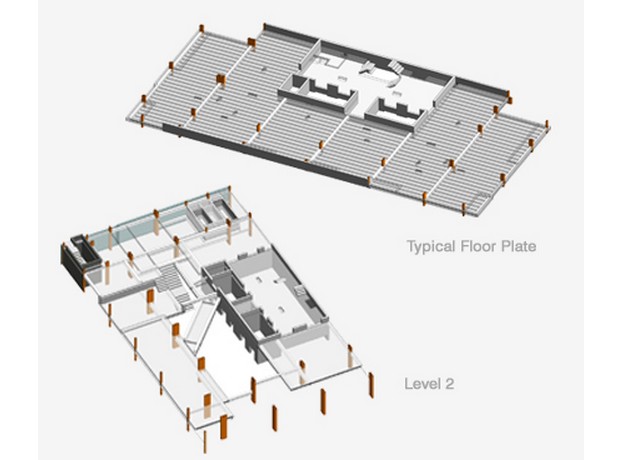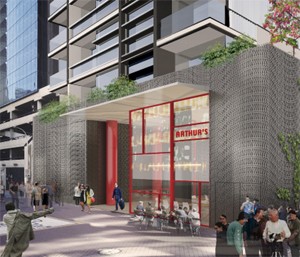A new 30-storey Meriton service apartment tower in North Sydney will become the first Australian high-rise residential building to have its floors constructed out of structural steel instead of concrete.
Designed by Tony Caro Architecture, 80 Arthur Street’s steel framed floor system was developed by engineering firm enstruct, and comprises universal column sections as primary beams that support a trapezoidal floor decking in the secondary direction.
According to enstruct, compressing the thickness of the prefabricated steel floor allows a structural floor depth of 290mm to be achieved without increasing the floor-to-floor height found in traditional concrete-framed buildings.
At the same time, the structural steel system reduces the building’s structural weight by approximately 40 per cent, while the streamlined on-site erection and installation process is expected to speed up construction so that the project is completed six months ahead of schedule, by the end of 2015.

“Steel appealed to me because it’s quicker than building with concrete,” explained Meriton managing director Harry Triguboff on the developer’s blog.
“You can never find out the advantages and disadvantages of a material by listening to other people; you have to try it for yourself. When you find another way of doing things, it keeps people on their toes.”
 Located in the North Sydney CBD, 80 Arthur Street has been designed to avoid competing with the various architectural styles and advertising found in the precinct, but to embrace a low-key profile with “well-proportioned facades made of good materials and are thoughtfully detailed”.
Located in the North Sydney CBD, 80 Arthur Street has been designed to avoid competing with the various architectural styles and advertising found in the precinct, but to embrace a low-key profile with “well-proportioned facades made of good materials and are thoughtfully detailed”.
“It is a quiet but well-designed building that is going to avoid fashion but be just as relevant ten years from now as it is today,” describes architect Tony Caro.
The glass tower features a window framing system made of aluminium, and a custom perforated screen on the lower levels with motifs that are an interpretation of the Sydney Harbour Bridge, which the building looks at.
“We felt that was a nice way of relating the building to its context and getting something different in the public art dimension down at the street level,” Caro says.
Images: Enstruct

